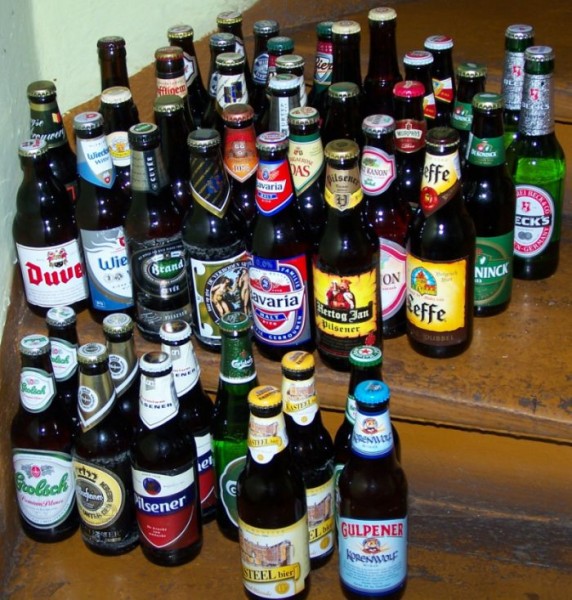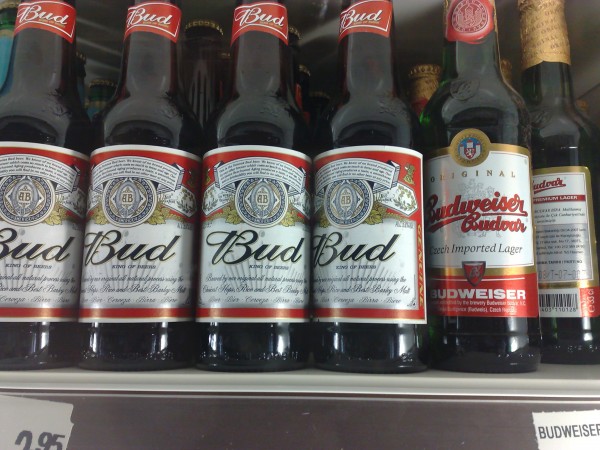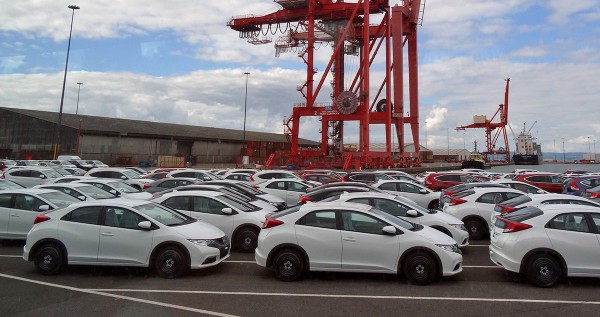 On 13th October 2015 the management team of SABMiller (the second largest brewing business in the world) agreed in principle to a $108 billion takeover offer from AB-InBev (the largest brewing business in the world). When the announcement was made it was clear that the global nature of the businesses involved meant that the deal would have to be cleared by numerous competition authorities from all over the world. This blog focuses on the latest developments in the European Union.
On 13th October 2015 the management team of SABMiller (the second largest brewing business in the world) agreed in principle to a $108 billion takeover offer from AB-InBev (the largest brewing business in the world). When the announcement was made it was clear that the global nature of the businesses involved meant that the deal would have to be cleared by numerous competition authorities from all over the world. This blog focuses on the latest developments in the European Union.
The relevant legislation in Europe that addresses Mergers and Acquisitions (M&As) is the Merger Regulation that came into force on the 1st May 2004. This legislation gives the European Commission (EC) the power to investigate M&As that are said to have an ‘EU dimension’ as they exceed certain turnover thresholds.
Businesses involved in an M&A that meet the ‘EU dimension’ are obliged to pre-notify the EC and obtain clearance before going ahead with the deal. AB-InBev formally notified the European Authorities of its intention to acquire SABMiller on 30th March 2016.
Once official notification has been received, the EC launches a Phase 1 investigation which usually has to be completed in 25 working days. The investigation focuses on whether the M&A would:
“significantly impede effective competition, in the internal market or in a substantial part of it, in particular as a result of the creation or strengthening of a dominant market position” (Article 2(2) and (3))
This is often referred to as the ‘SIEC’ test. In addition to worries that an M&A may create or strengthen ‘single-firm dominance’, the ‘SIEC’ test is also used to test for ‘collective dominance’. Collective dominance is the possibility that the M&A might make either formal or tacit collusion more likely.
The European Competition has expressed concerns that the acquisition of SABMiller by AB-InBev might significantly impede effective competition in the premium lager market. Unconditional clearance of the deal would result in the same business owning many of the best-selling premium lager brands in Europe, including Stella Artois, Beck’s, Budweiser, Corona, Peroni and Grolsh.
As part of the Phase 1 investigation, the management of the businesses involved with the M&A can have ‘State of Play meetings’ with officials from the EC. At these meetings EC staff can raise any competition concerns they have with the deal and the businesses can respond by offering to take specific actions that they hope will address any issues. The most common action is a commitment to sell of some of the assets of the newly merged business.
Any commitments must be made no later than 20 days following the formal notification of the merger and they result in the time frame for the Phase 1 investigation being extended from 25 to 35 working days.

On the 8th April, AB-InBev made a commitment to the EC to sell the SABMiller brands Peroni, Grolsch and Meantime as a potential remedy for their competition concerns. A price of €2.55 billion for the deal was agreed with Asahi – the largest Japanese brewery. The sale of the brands is subject to the acquisition of SABMiller by AB-InBev being completed. Following this commitment, the EC extended the deadline for the Phase 1 investigation to May 24th.
It appears that at subsequent State of Play meetings EC officials expressed concerns that this commitment was not enough to address fully their worries over the impact of the acquisition on competition.
On April 27th (just inside the 20-working-day deadline) AB-InBev made an extended package of commitments to the European Union authorities to try to remedy their continued concerns. The commitments now include the sale of the SABMiller breweries in Eastern Europe (Poland, Hungary, Romania, the Czech Republic and Slovakia). Part of this sale would also include the Pilsner Urquell brand – a best-selling beer in the Czech Republic – and the Drecher brand – a best-selling beer in Hungary.
If the EC decides that the deal still raises concerns and could significantly impede effective competition in the single market, then the acquisition will be referred for a Phase 2 investigation. Phase 2 investigations are far more detailed than at Phase 1 and place far greater burdens on the parties involved. They also take much longer. The initial deadline for completion is 90 working days, but this can be extended to 125 working days in certain circumstances. Taking holidays into account they could last for 6 to 7 months before coming to a final decision.
This may help to explain why AB-InBev is willing to sell off nearly all of SABMiller’s European assets in the hope of obtaining clearance for a deal at the end of the Phase 1 investigation. The company aims to finalise the takeover in autumn of this year and is therefore very keen to avoid any regulatory delay created by a more detailed Phase 2 investigation.
Its willingness to sell off the European assets also confirms AB InBev’s main motive for its acquisition of SABMiller – to gain access to new and growing markets in Africa and Latin America.
It will be interesting to see the outcome of the Phase 1 investigation on May 24th.
Articles
AB InBev accepts Asahi offer for Peroni and Grolsch Independent (19/4/16)
Asahi laps up Peroni and Grolsch to smoothe AB InBev’s SABMiller deal The Telegraph (19/4/16)
Peroni and Grolsch sold as AB Inbev and SABMiller deal nears The Guardian (19/4/16)
AB InBev offers more SAB Europe assets to win EU deal approval Reuters (29/4/16)
Peroni and Grolsch brands sold by AB InBev to Asahi BBC News (19/4/16)
Questions
- What threshold criteria have to be met in order for a merger to be classed as having a European dimension?
- Discuss the different types of decision that can be made by the European Commission at the end of a Phase 1 investigation.
- Compare the notification system used by the European Commission with the one used by the UK competition authorities.
- Discuss some of the market conditions that would make either formal or tacit collusion more likely.
- Discuss some factors that might make it in the interests of society for an M&A to go ahead?
- To what extent does the evidence suggest that M&As have delivered the benefits predicted by the managers of the businesses involved?
 The European Commission has recently carried out a number of investigations into the various sectors of the industry that supplies parts to car manufacturers. Firms have been found guilty of engaging in anti-competitive practices in the supply of bearings, wire harnesses and the foam used in car seats. The latest completed case relates to firms that supply alternators and starters – both important components in a car engine.
The European Commission has recently carried out a number of investigations into the various sectors of the industry that supplies parts to car manufacturers. Firms have been found guilty of engaging in anti-competitive practices in the supply of bearings, wire harnesses and the foam used in car seats. The latest completed case relates to firms that supply alternators and starters – both important components in a car engine.
On January 27th the European Commission announced that it was imposing fines on some Japanese manufacturing companies. Melco (Mitsubishi Electric), Hitachi and Denso were found guilty of participating in a cartel between September 2004 and February 2010 that restricted competition in the supply alternators and starters to car manufacturers.
The Commission gathered evidence showing that senior managers in the three businesses held discussions about how to implement various anti-competitive practices. These either took place on the phone or at meetings in offices/restaurants. In particular the firms agreed:
|
|
| • |
to co-ordinate their responses to tenders issued by car manufacturers. This involved them agreeing on the price each firm would bid. |
| • |
to exchange commercially sensitive information about pricing and marketing strategies. |
| • |
which of them would supply each car manufacturer with alternators and starters. |
These activities are in breach of Article 101 of the Treaty on the Functioning of the European Union (2009). The European Commissioner for Competition, Margrethe Vestager, stated that:
“Today’s decision sanctions three car part producers whose collusion affected component costs for a number of car manufacturers selling cars in Europe, and ultimately European consumers buying them. If European consumers are affected by a cartel, the Commission will investigate it even if the cartel meetings took place outside of Europe”
The fines imposed on the three businesses were as follows:
– Denso €0
– Hitachi €26 860 000
– Melco €110 929 000
How are these fines calculated? When calculating the size of the fine to impose on a firm the Commission takes into account a number of factors. These include:
|
|
| • |
the size of its annual sales affected by the anti-competitive activities. |
| • |
its market share. |
| • |
the geographical area of its sales. |
| • |
how long it had taken part in the cartel. |
| • |
whether it had previously been found guilty of engaging in anti-competitive practices. |
| • |
if it initiated the cartel in the first place i.e. was it the ring leader? |
In this particular case the size of the fine imposed on both Hitachi and Melco was increased because they had both previously been found guilty of breaking EU competition rules.
If a member of the cartel comes forward with information that helps the Commission with its investigation, a reduction in the size of the fine can be applied under a provision called a Leniency Notice (2006). Timing as well as the quality of the information provided influences the size of this reduction. For example, only the first firm to come forward with relevant information can receive a reduction of up to 100% i.e. obtain full immunity. This explains how Denso could be found guilty but not have to pay a fine. (This firm’s initial approach to the Commission actually triggered the investigation.) Any subsequent firms that come forward with information receive smaller fine reductions. Hitachi and Melco received reductions of 30% and 28% respectively.
If a firm accepts the Commission’s decision a further reduction of up to 10% can be applied. This is called a Settlement Notice (2008). All three firms were awarded the full 10% discount in this case.
The European Commission is currently investigating the behaviour of firms that supply car thermal systems, seatbelts and exhaust systems.
Articles
Car parts price-fixing fines for Hitachi and Mitsubishi Electric BBC News 27/01/16
EU antitrust regulators to fine Japanese car part makers: sources Tech News 26/01/16
Mitsubishi Electric and Hitachi get $150 EU cartel fine Bloomberg 27/01/16
EU fines Mitsubishi Electric, Hitachi for car part cartel Reuters 27/1/16
Questions
- What market conditions would make the formation of a cartel more likely?
- Draw a diagram to illustrate the impact of a profit maximising cartel agreement on the price, output and profit in an industry.
- Draw a diagram to illustrate the incentive that each firm has to cheat on an agreed cartel price and output.
- Why did the European Commission introduce Settlement Notices?
On 11 November, the European Commission announced that it was imposing fines totalling €173 million on plastic additives producers for operating a price fixing and market sharing cartel. There were 24 companies involved in the cartel. As Competition Commissioner, Neelie Kroes, said, “These companies must learn the hard way that breaking the law does not pay and that repeat offenders will face stiffer penalties. The companies’ elaborate precautions to cover their tracks did not prevent the Commission from revealing the full extent of their determined efforts to rip-off their customers”.
An interesting feature of this particular case is that one of the companies fined is AC Treuhand, a Swiss-based consultancy company. It is not a plastics producer, but took on the role of organising the cartel. Neelie Kroes said that “the company’s Swiss premises were chosen for secret meetings of cartel participants as they were outside the EU and beyond the commission’s jurisdiction. This made it harder for the watchdog to seize documents.”
Antitrust: Commission fines plastic additives producers €173 million for price fixing and market sharing cartels Europa Press Release (11/11/09)
FACTBOX-EU fines heat stabilisers cartel 173 mln euros Reuters (11/11/09)
EU fines consultant for alleged cartel role Financial Times, Nikki Tait (11/11/09)
EU cartel fine for plastics firms BBC News (11/11/09)
EU fines plastics cartel euro173 million Forbes (11/11/09)
Questions
- What conditions must apply if a cartel is to succeed in raising prices? To what extent did these conditions apply to the plastic additives cartel?
- What powers does the European Commission have under Article 81 of the Treaty of Amsterdam? (See and also. See also page 369 in Sloman and Wride Economics 7th ed.)
- Are cartel activities necessarily against the interests of the consumer? Explain.
 On 13th October 2015 the management team of SABMiller (the second largest brewing business in the world) agreed in principle to a $108 billion takeover offer from AB-InBev (the largest brewing business in the world). When the announcement was made it was clear that the global nature of the businesses involved meant that the deal would have to be cleared by numerous competition authorities from all over the world. This blog focuses on the latest developments in the European Union.
On 13th October 2015 the management team of SABMiller (the second largest brewing business in the world) agreed in principle to a $108 billion takeover offer from AB-InBev (the largest brewing business in the world). When the announcement was made it was clear that the global nature of the businesses involved meant that the deal would have to be cleared by numerous competition authorities from all over the world. This blog focuses on the latest developments in the European Union.
